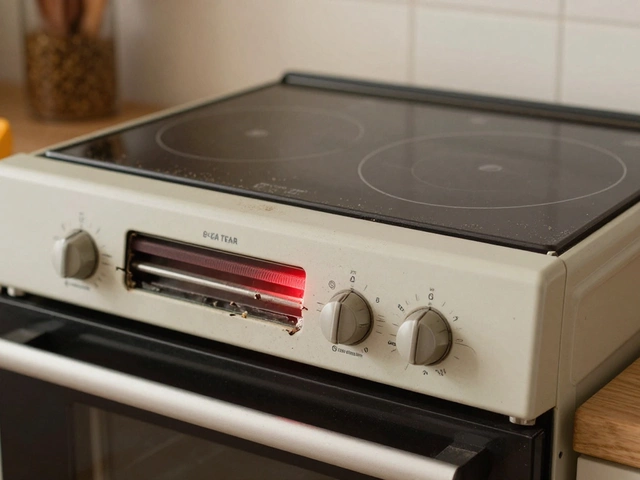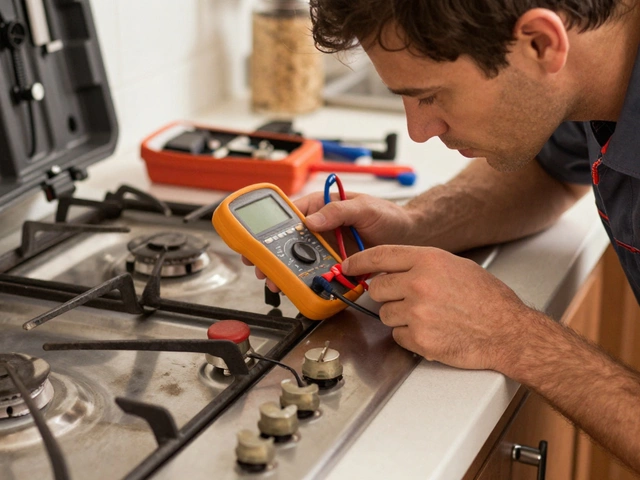Screen Replacement: What It Is and Why It Matters
When dealing with Screen Replacement, the process of removing a broken or faulty display and fitting a new one. Also known as display repair, it’s a key part of keeping many household appliances functional. Appliance Repair, the broader service of fixing any malfunctioning home device often includes screen work, especially for ovens, microwaves, and refrigerators that use glass doors or digital panels. Understanding how these pieces connect helps you decide when to call a pro versus trying a DIY fix.
How Screen Replacement Connects to Other Repair Tasks
Screen replacement requires a skilled technician who knows how to handle delicate glass and electronic components safely. Glass Door, the tempered glass panel that covers many modern ovens and fridges is a common screen type; its breakage often leads to heat loss or safety hazards. Replacing a glass door is essentially a subset of screen replacement, meaning the same tools and safety steps apply. Likewise, a Display Panel, the electronic screen that shows temperature or timer settings influences how well the appliance runs. A faulty panel can cause inaccurate readings, so swapping it out restores performance and can even improve energy efficiency.
Think of screen replacement as a bridge between pure mechanical fixes and high‑tech electronics. When the glass cracks, you’re dealing with a physical hazard; when the digital panel flickers, you’re addressing an electronic fault. Both scenarios fall under the umbrella of appliance repair, but each demands a different focus. A technician must assess whether the issue is structural (like a broken glass door) or electronic (like a short‑circuited display panel) before deciding on the right part and method.
One common misconception is that any screen can be swapped with any other. In reality, screen sizes, mounting brackets, and wiring harnesses vary by model. That’s why a knowledgeable repair service checks the manufacturer’s specifications, matches the exact part number, and ensures the replacement meets safety standards. Skipping these steps can lead to leaks, uneven heating, or even electric shock risks.
Another important angle is cost‑benefit analysis. Replacing a glass door on an oven might cost less than buying a brand‑new unit, especially if the rest of the appliance works fine. On the other hand, an older fridge with a failing digital panel may be nearing the end of its useful life, making a full replacement a smarter financial move. A good technician will walk you through the numbers, weighing part costs, labor, and potential energy savings.
When you’re ready to act, there are a few practical steps you can take. First, turn off power at the mains and unplug the appliance to avoid any accidental shock. Next, carefully remove any remaining shards of broken glass, wearing gloves and using a vacuum to pick up tiny pieces. For electronic panels, disconnect the wiring harness according to the manual—many manufacturers label the connectors for easy identification. Finally, fit the new screen using the original mounting hardware, double‑check all connections, and restore power to test the appliance.
Whether you’re fixing a cracked oven door, a busted refrigerator display, or a malfunctioning microwave screen, the core principles stay the same: safety first, correct part selection, and proper installation. Below you’ll find a curated set of articles that dive deeper into each of these topics, from cost comparisons to DIY troubleshooting tips. Explore them to get the full picture before you decide on a repair path.
Ever wondered what part of a laptop can drain your wallet during repairs? This article breaks down the true cost drivers inside your computer and explains why some fixes are steeper than others. We’ll look at real examples of pricy repairs and talk about what makes certain parts so costly. You’ll also pick up practical tips to avoid these big-ticket problems. Read on if you want to keep your laptop running—and your expenses in check.


